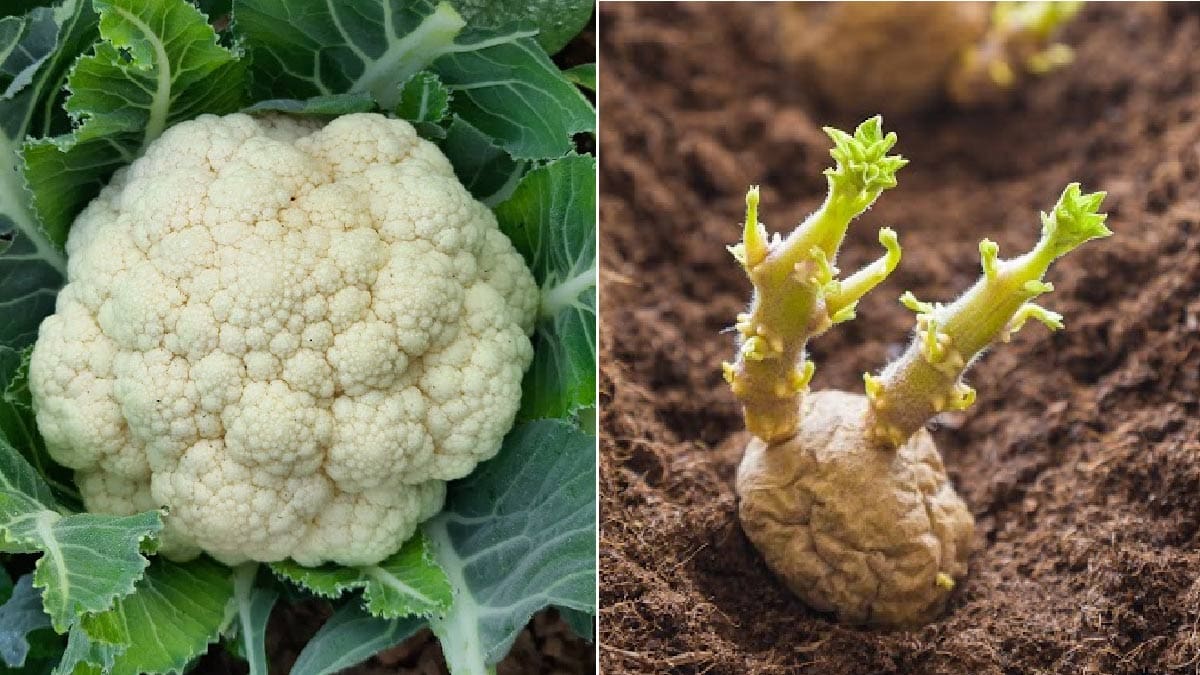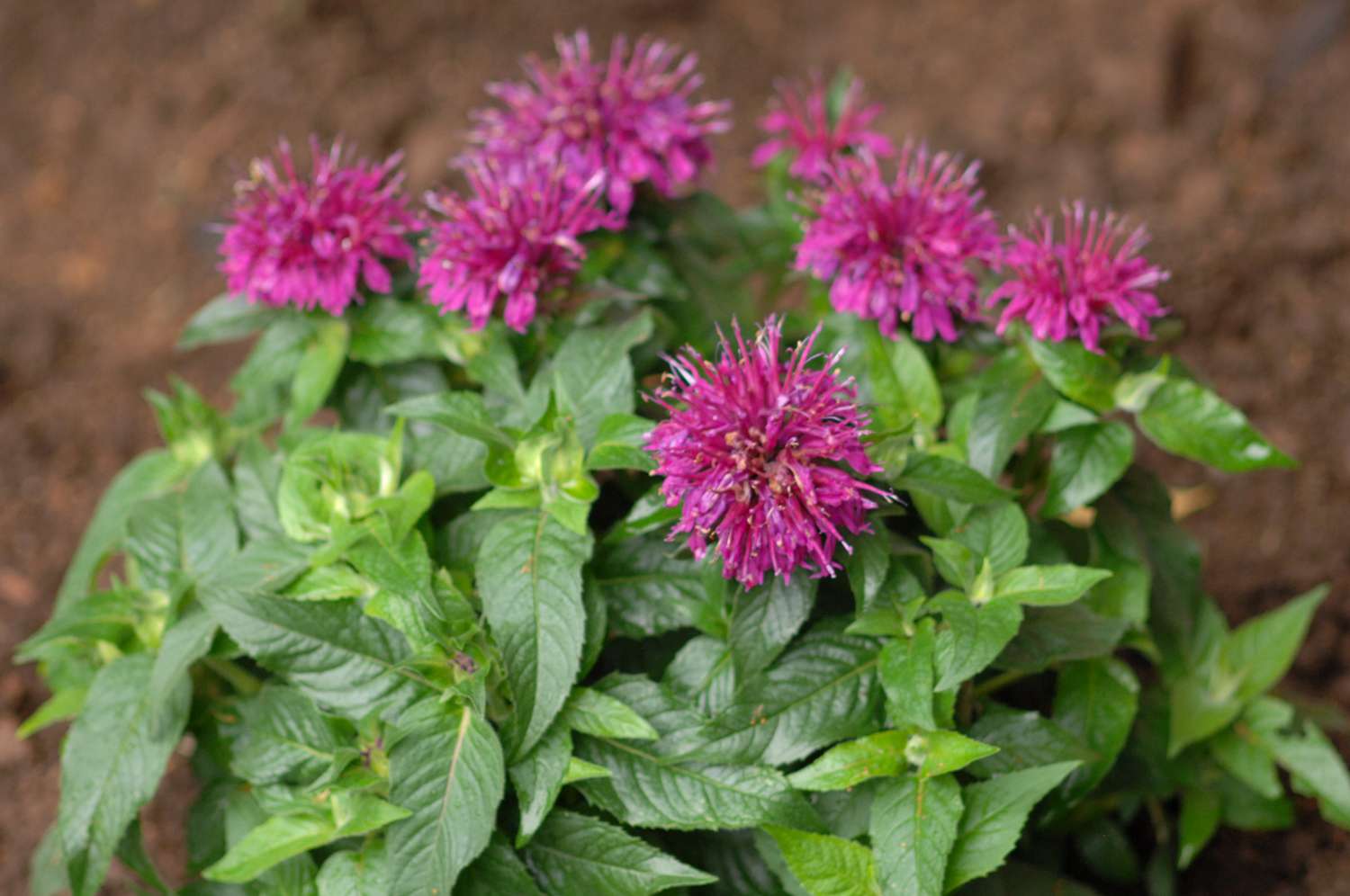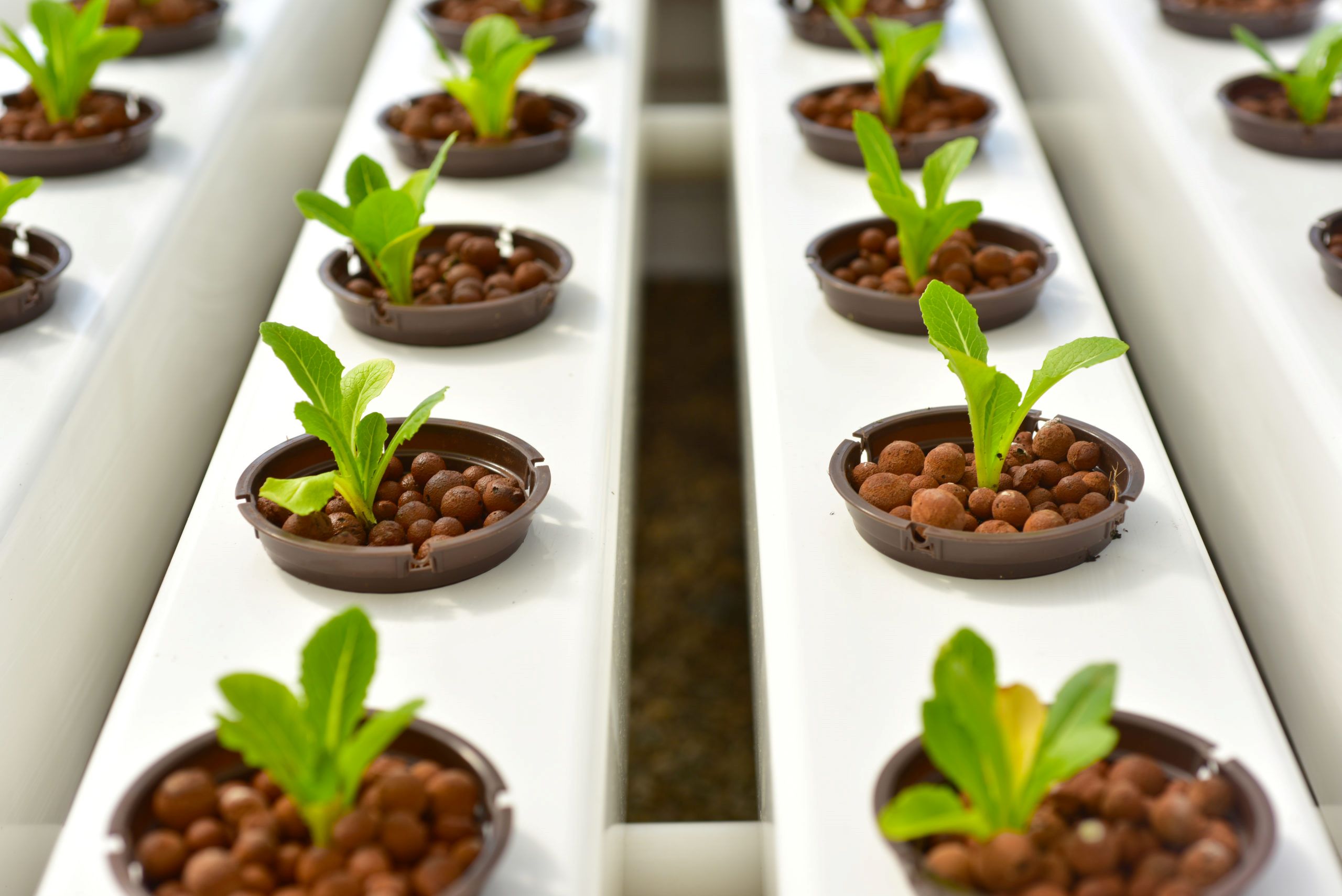Home>Gardening Techniques>DIY Projects>How To Dig In Clay Soil


DIY Projects
How To Dig In Clay Soil
Published: February 12, 2024
Learn how to tackle DIY projects in clay soil with our expert tips and techniques. Transform your garden with our step-by-step guide!
(Many of the links in this article redirect to a specific reviewed product. Your purchase of these products through affiliate links helps to generate commission for Chicagolandgardening.com, at no extra cost. Learn more)
Table of Contents
Introduction
Welcome to the world of DIY gardening and landscaping! If you're eager to roll up your sleeves and transform your outdoor space, you've come to the right place. One of the fundamental tasks in any garden or landscaping project is digging, and if you're dealing with clay soil, you may have encountered some unique challenges. But fear not, as this comprehensive guide will equip you with the knowledge and techniques needed to conquer clay soil like a seasoned pro.
Clay soil is known for its dense, heavy texture, which can make digging a daunting prospect for many DIY enthusiasts. However, with the right approach and tools, you can effectively work with this soil type to create the garden or landscape of your dreams. From understanding the characteristics of clay soil to mastering the art of soil preparation and selecting the appropriate tools, this guide will cover everything you need to know to tackle your project with confidence.
Whether you're a novice gardener or a seasoned DIY aficionado, learning how to dig in clay soil is a valuable skill that will serve you well in a wide range of outdoor projects. By mastering the techniques outlined in this guide, you'll be well-equipped to handle the challenges of clay soil and unleash your creativity in your outdoor endeavors.
So, roll up your sleeves, grab your gardening gloves, and get ready to dive into the world of clay soil digging. With the insights and tips provided in this guide, you'll be well on your way to transforming your outdoor space into a thriving oasis of natural beauty and functionality. Let's embark on this exciting journey together and unearth the secrets to successful clay soil digging!
Understanding Clay Soil
Before delving into the intricacies of digging in clay soil, it’s essential to develop a comprehensive understanding of this unique soil type. Clay soil is characterized by its fine particles and high level of compaction, which can pose challenges for gardeners and landscapers. Due to its dense nature, clay soil tends to retain moisture and can become extremely hard when dry, making it difficult to cultivate and work with.
One of the key factors that sets clay soil apart is its nutrient-rich composition. While it may present challenges in terms of drainage and aeration, clay soil offers excellent fertility, providing a solid foundation for plant growth when managed effectively. Understanding the properties of clay soil will enable you to implement strategies to optimize its characteristics and create a thriving environment for your plants and landscaping features.
When dealing with clay soil, it’s important to recognize that it has a tendency to compact easily, leading to poor drainage and limited root penetration for plants. Additionally, the soil can become sticky and heavy when wet, making it challenging to manipulate. However, with the right approach, these challenges can be overcome, allowing you to harness the benefits of clay soil while mitigating its limitations.
By gaining insight into the behavior and composition of clay soil, you’ll be better equipped to tailor your gardening and landscaping techniques to suit its specific needs. This understanding will empower you to make informed decisions regarding soil preparation, plant selection, and irrigation methods, ultimately leading to successful and sustainable outdoor projects.
As we delve deeper into the world of clay soil, you’ll discover effective strategies for preparing the soil, selecting the right tools, and implementing techniques that will streamline the digging process and set the stage for a flourishing garden or landscape. Armed with this knowledge, you’ll be ready to tackle the challenges of clay soil with confidence and creativity, unlocking its full potential in your outdoor endeavors.
Preparing the Soil
Preparing clay soil for gardening or landscaping projects is a crucial step that sets the stage for successful outcomes. Given the unique characteristics of clay soil, proper preparation is essential to optimize its structure and create an environment conducive to plant growth and overall project success. By implementing targeted strategies, you can address the challenges posed by clay soil and harness its inherent fertility to create a thriving outdoor space.
One of the primary considerations when preparing clay soil is addressing its compaction and drainage issues. Due to its dense nature, clay soil tends to become compacted, hindering water infiltration and root development. To combat this, incorporating organic matter such as compost, well-rotted manure, or peat moss into the soil can improve its structure and enhance drainage. These amendments help to break up clay particles, increase air space, and promote better water movement within the soil.
In addition to organic matter, the incorporation of coarse materials such as sand or perlite can further aid in improving the texture and drainage of clay soil. By blending these materials into the soil, you can mitigate the tendency of clay soil to become waterlogged and create a more hospitable environment for plants to thrive. It’s important to note that while these amendments can enhance the soil’s characteristics, it’s essential to avoid excessive sand content, as this can lead to the development of a cement-like consistency in the soil.
Furthermore, proper soil preparation involves the use of appropriate cultivation techniques to ensure that the amendments are thoroughly integrated. Tilling or digging the soil to a suitable depth allows the organic matter and other additives to be evenly distributed, facilitating the improvement of the soil structure throughout the planting area. This process also helps to loosen the soil, reduce compaction, and create a welcoming environment for plant roots to establish and flourish.
By taking the time to prepare clay soil thoughtfully and diligently, you can overcome its inherent challenges and transform it into a fertile and productive medium for your gardening and landscaping endeavors. The next step in this journey involves selecting the right tools to facilitate effective digging and cultivation in clay soil, a topic we’ll explore in the following section.
Choosing the Right Tools
When it comes to digging in clay soil, selecting the appropriate tools can significantly impact the efficiency and success of your gardening or landscaping project. The dense and compact nature of clay soil requires tools that are specifically designed to handle its unique characteristics, allowing you to work effectively and minimize the physical strain associated with digging in this challenging soil type.
One of the essential tools for working with clay soil is a sturdy digging fork. Unlike traditional spades or shovels, a digging fork features sturdy tines that can penetrate and loosen compacted soil with greater ease. This tool is particularly useful for breaking up clumps of clay and aerating the soil, facilitating better water penetration and root development for plants. Additionally, the leverage provided by a digging fork can help reduce the exertion required when working with dense clay soil.
Another valuable tool for navigating clay soil is a mattock, which combines the features of an axe and an adze. The mattock’s versatile design allows it to effectively break up hard soil, remove rocks and roots, and prepare the ground for planting. Its chopping and digging capabilities make it well-suited for tackling the challenging terrain presented by clay soil, enabling you to create planting beds and clear the area for landscaping features with precision and efficiency.
In addition to handheld tools, power equipment such as a rototiller can be a valuable asset when working with clay soil on a larger scale. A rototiller equipped with sturdy tines or blades can effectively break up compacted clay, incorporate soil amendments, and prepare the ground for planting or landscaping. When using a rototiller, it’s important to exercise caution and follow the manufacturer’s guidelines to ensure safe and efficient operation, especially in densely packed clay soil.
Furthermore, the inclusion of a sturdy garden hoe in your toolkit can aid in cultivating and shaping the soil surface, allowing you to create smooth and level planting areas while incorporating soil amendments. A hoe with a sharp blade and a robust handle can facilitate precise soil manipulation, making it an indispensable tool for refining the texture and structure of clay soil in preparation for planting and landscaping.
By equipping yourself with the right tools tailored to the demands of clay soil, you can streamline the digging process, enhance soil quality, and lay the groundwork for a successful and rewarding outdoor project. With the proper tools at your disposal, you’ll be well-prepared to implement effective techniques for digging in clay soil, a topic we’ll explore in the following section.
Techniques for Digging in Clay Soil
Mastering the right techniques for digging in clay soil is essential to navigate its unique challenges and achieve successful results in your gardening or landscaping endeavors. By employing strategic approaches and leveraging specialized methods, you can effectively work with clay soil to create a fertile and accommodating environment for your plants and outdoor features.
One of the fundamental techniques for digging in clay soil involves working with the soil at the right moisture level. Clay soil is notorious for becoming extremely hard and compact when dry, making it arduous to manipulate. To counter this, it’s beneficial to tackle digging tasks when the soil is slightly moist but not overly wet. This optimal moisture level allows the soil to be more pliable, making it easier to dig and cultivate while minimizing the risk of excessive compaction.
When digging in clay soil, it’s important to approach the task methodically and patiently. Rather than attempting to dig large areas in a single session, focus on smaller sections at a time, allowing you to exert controlled effort and achieve better results. By breaking the task into manageable segments, you can maintain your energy and concentration while ensuring thorough soil preparation and cultivation.
Utilizing a digging fork in a rocking motion can be highly effective for loosening compacted clay soil. Insert the fork into the soil, then gently rock it back and forth to create fractures and break up dense clumps. This technique allows you to aerate the soil and improve its structure, promoting better drainage and root penetration for plants. By employing a rocking motion, you can minimize the physical strain on your body while maximizing the impact of the tool on the challenging clay soil.
Furthermore, incorporating organic matter and soil amendments as you dig can enhance the soil’s fertility and texture, setting the stage for successful planting and landscaping. As you work through the soil, mix in compost, well-rotted manure, or other suitable additives to enrich the clay soil and improve its overall quality. This integrated approach ensures that the amendments are evenly distributed, laying the groundwork for a nourishing environment that supports healthy plant growth.
By implementing these targeted techniques and approaches, you can navigate the complexities of clay soil with confidence and precision, setting the stage for a flourishing garden or landscape. The next section will provide valuable tips and insights to further enhance your success when digging in clay soil, empowering you to achieve outstanding results in your outdoor projects.
Tips for Success
As you embark on the journey of digging in clay soil, incorporating the following tips and best practices can significantly contribute to the success of your gardening or landscaping project. These insights are designed to empower you with the knowledge and strategies needed to overcome the challenges of clay soil and create a thriving outdoor space that reflects your vision and creativity.
- Timing Is Key: When planning your digging activities in clay soil, consider the timing carefully. Optimal moisture levels in the soil make it more manageable, so aim to work when the soil is slightly moist but not waterlogged. This approach facilitates easier digging and cultivation while minimizing the risk of soil compaction.
- Amend the Soil: Incorporating organic matter such as compost, well-rotted manure, or peat moss into the clay soil can significantly improve its structure and fertility. These amendments help to break up clay particles, enhance drainage, and provide essential nutrients for plant growth. Thoroughly mixing these additives into the soil ensures a balanced and nourishing environment for your plants.
- Choose the Right Plants: Select plant varieties that are well-suited to clay soil conditions. Certain plants, such as many ornamental grasses, daylilies, and sedums, thrive in clay soil and can contribute to a vibrant and resilient garden. Researching and choosing plant species that are compatible with clay soil will set the stage for long-term success and minimize maintenance requirements.
- Protect Soil Structure: To prevent the re-compaction of clay soil, avoid walking or working on wet soil. The weight and pressure exerted on wet clay soil can lead to compaction, undoing the progress made during soil preparation. Minimizing foot traffic and heavy equipment on wet clay soil helps preserve its improved structure and porosity.
- Implement Raised Beds: Creating raised planting beds can be an effective strategy for managing clay soil. By elevating the planting area, you can improve drainage and aeration while providing a more controlled environment for plant roots to thrive. Raised beds also offer the flexibility to tailor the soil composition to better suit the needs of specific plant varieties.
By incorporating these tips into your approach to digging in clay soil, you can enhance the effectiveness of your efforts and cultivate a flourishing outdoor space that embodies your vision and creativity. These insights, combined with the knowledge and techniques shared in this guide, will empower you to tackle the challenges of clay soil with confidence and achieve outstanding results in your gardening and landscaping endeavors.
Conclusion
Congratulations on embarking on the enriching journey of digging in clay soil! Throughout this comprehensive guide, we’ve delved into the intricacies of working with this unique soil type, equipping you with the knowledge, techniques, and tips needed to overcome its challenges and unleash its potential in your outdoor projects. By understanding the characteristics of clay soil and implementing targeted strategies for soil preparation, tool selection, and cultivation techniques, you’ve gained valuable insights into transforming clay soil into a fertile and accommodating medium for plant growth and landscaping.
As you navigate the complexities of clay soil, remember that patience, thoughtful preparation, and the right tools are key to achieving success. By embracing the inherent fertility of clay soil and leveraging its nutrient-rich composition, you have the opportunity to create a vibrant and sustainable outdoor space that reflects your vision and creativity. Whether you’re cultivating a lush garden, establishing ornamental plantings, or crafting inviting outdoor living areas, the knowledge and techniques acquired in this guide will serve as valuable assets in your endeavors.
It’s important to approach digging in clay soil with a spirit of adaptability and innovation, recognizing that each project presents its own opportunities and considerations. By incorporating the tips for success and leveraging your newfound understanding of clay soil, you can confidently navigate the challenges and cultivate a thriving environment that flourishes for years to come.
Remember, the journey of working with clay soil is a dynamic and rewarding experience, offering opportunities for continuous learning and creative expression. As you apply the principles and techniques outlined in this guide, you’ll not only achieve remarkable results in your outdoor projects but also develop a deeper appreciation for the resilience and potential of clay soil.
Armed with the knowledge and insights gleaned from this guide, you’re poised to embark on your clay soil digging endeavors with confidence and enthusiasm. Embrace the process, celebrate the progress, and revel in the transformation of clay soil into a vibrant canvas for your outdoor aspirations. Your dedication and creativity will undoubtedly yield a landscape that flourishes and inspires, showcasing the beauty and productivity that can be achieved when working with clay soil.




